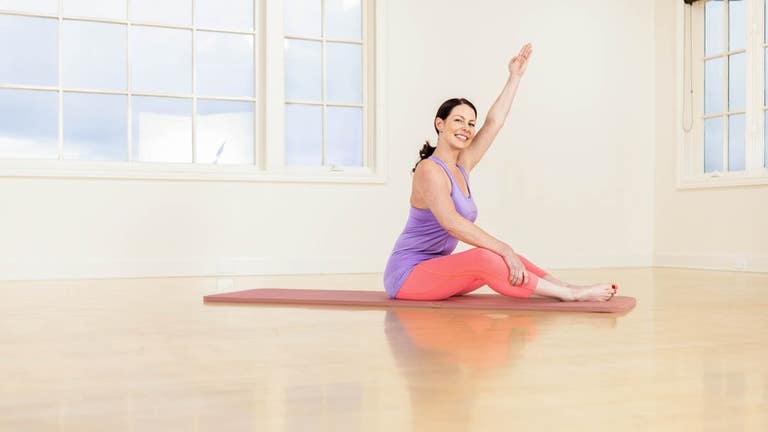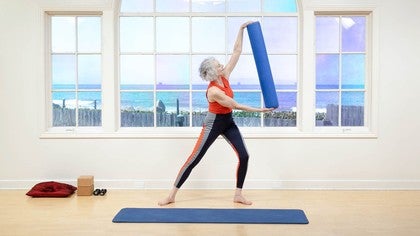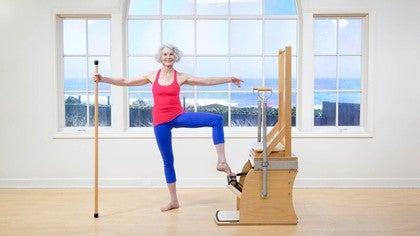Pilates for Osteoporosis
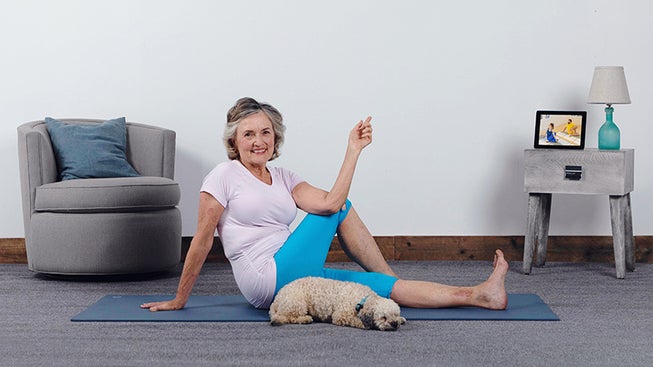
Pilates for Seniors: Osteoporosis
By the age of 50, approximately 50% of women and 25% of men will experience the effects of Osteoporosis or its precursor, Osteopenia. Osteoporosis is characterized by the presence of low bone mass and the deterioration of bone tissue, leading to an increased risk of fractures, particularly in the hips, spine, wrists, and shoulders. A specialized Pilates practice can help alleviate these symptoms by specifically targeting muscle and bone strength, effectively preventing further bone mass loss and potentially even reversing the effects of Osteoporosis. Pilates focuses on alignment through weight-bearing exercises, while simultaneously strengthening the core, spine, and legs, which are crucial for individuals with Osteopenia or Osteoporosis.
Pilates Benefits for Osteoporosis
Building up bone density is essential in counteracting the effects of Osteoporosis. Various factors and lifestyle changes, including both medical and alternative methods, play a pivotal role. Medication, increasing Vitamin D, and diet changes, as well as adopting exercises to increase bone density and safe practices in daily activities are all ways to alleviate symptoms of Osteoporosis.
While the amount of bone density that can be regained varies by individual, research indicates that increases in bone density can occur. Nonetheless, these improvements serve as a preventive measure against further bone loss.
For those dealing with Osteopenia or Osteoporosis, engaging in a specialized Pilates program two-three times per week can be an excellent resource. This type of program not only strengthens muscles, but also promotes bone strength. Pilates exercises that involve weight-bearing like Standing Pilates or resistance on the Reformer are recommended. Conversely, a traditional Pilates practice can harm those with Osteoporosis, as many exercises involve forward flexion. As individuals progress with Pilates, they can gradually incorporate more challenging exercises that involve increased load and functionality. Additionally, walking for 40 minutes, around three to four times per week, is also beneficial.
Safe Exercises for Osteoporosis
With Osteoporosis comes a weakened skeletal structure, which unfortunately increases the risk for fractures. Staying active and safely performing recommended bone and muscle strengthening exercises can significantly reduce the risk of fracture, as well as helping you stay healthy and independent.
Individuals with Osteoporosis should perform exercises for balance, muscle strength, and back extension. Weight-bearing exercises, such as walking three to four times per week, are highly recommended because gravity promotes strength and bone health. Muscle strengthening and maintaining healthy balance prevent the development of bad habits and reduces the likelihood of falls, thus decreasing the risk of fractures. It is ideal for those with Osteoporosis to be able to get up and down from the floor or pick up an object without curving the spine.
Standing exercises, squatting, and side lying exercises are all great ways to strengthening the legs and hips. For instance, different variations of the Side Kick can help support the spine, improve posture, and strengthen the bones. For a safe and effective back-strengthening routine, try incorporating Swan Dive, Breaststroke, Single Leg Kick, and Swimming exercises. Emphasizing back extension exercises over traditional, forward-flexing Pilates exercises is fundamental for proper Osteoporosis training.
Featured Classes for Osteoporosis
Modifications for Seniors with Osteoporosis
Pilates is a great form of exercise for improving posture, alignment, strength, balance, mobility, and confidence. For the individual with Osteopenia or Osteoporosis, it is not recommended to follow the traditional Pilates repertoire due to the significant forward-flexion involved in many exercises. A "slouched" or forward posture translates to an overstretched and weak back, gradually causing wear and tear on vertebral discs. If an individual with bone loss bends over with a curved spine to pick up any object, they are doing so in a compromised position. Rather than engaging their back muscles, the overstretched ligaments are doing a job they are not designed to do, leading to disc deterioration and potentially causing fractures.
Fortunately, with the right modifications, there are a number of safe, bone-building Pilates exercises for anyone with Osteoporosis. The most important modification for a flexed spine is learning the hip hinge for both Pilates exercises and everyday activities involving lifting, gardening, or using household appliances like the dishwasher or oven. While many Pilates abdominal exercises involve lifting the head and upper body, omitting this movement helps maintain spinal integrity and allows for a deeper, more challenging engagement of the core muscles.
Tips and Precautions
Seniors with Osteoporosis will benefit from incorporating new habits into their lifestyles. These habits help reduce the risk of fractures and lead to a healthier, stronger, and independent quality of life. Everyday activities, including but not limited to sitting, driving, gardening, using the oven, getting out of bed, and carrying children, pets, or objects, can be performed more efficiently.
The number one recommendation for anyone with low bone density is to use the hip hinge technique instead of curving the spine when picking up objects, bending over, or getting down on the floor. In general, one should not hold any position for more than 20 minutes and to avoid carrying anything over 20 lbs (approximately 9 kg). When sitting, you can achieve upright posture and avoid slouching the spine by moving to the back of the chair to obtain a more upright position. When driving, focus on maintaining a sense of length in the spine. When lifting objects, use your hip hinge or lunge techniques to bring the object close to the body before coming back up.
Find more tips for Standing Pilates and Chair Pilates workouts here.
Pilates Exercises to Avoid
Pilates is an effective and safe form of exercise for anyone with Osteoporosis or Osteopenia. Still, it is important to be aware of what Pilates exercises should be avoided due to concerns related to low bone mass and risk of fractures.
Featured Blogs
Your Pilates Anytime Membership Benefits
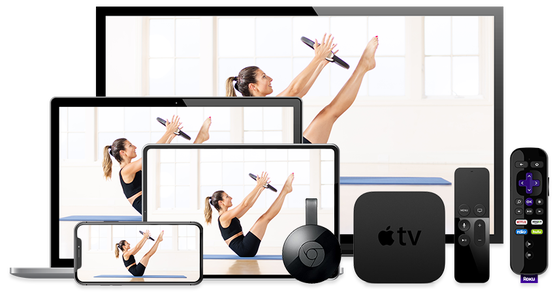
- 15-Day Free Trial
- Unlimited Access to Thousands of Classes
- 95+ Pilates Programs and Challenges
- No Ads
- New Videos Weekly
- Available on All Your Favorite Devices
